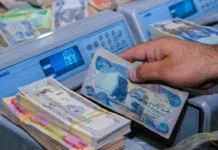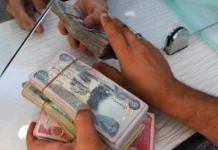Good Morning ,
Trump’s Trade Deals in Asia — Strategic Trade Meets Financial Settlement
Why the latest U.S. trade pacts in Asia matter for the global financial reset
Overview
Donald Trump’s recent trade agreements with Southeast Asian nations (notably Malaysia, Cambodia, Vietnam and frameworks with Thailand) illustrate how economic diplomacy is being used to recast alliance structures in Asia — and by extension, to reposition access to global trade and financial networks.
*********************************************
Key developments
- On October 26 2025, the U.S. finalised trade deals with Malaysia and Cambodia, covering about 68 % of U.S.–ASEAN two-way trade.
- The pacts include provisions for export-controls, investment-screening, and tariff concessions tied to broader strategic goals (implicitly directed at China).
- The U.S. also struck a one-year trade truce with Xi Jinping’s China on the sidelines of the APEC summit (October 30 2025), easing trade-war risk and injecting new momentum into regional realignments.
What this means for global alliances
- Trade deals as alliance currency: The U.S. uses access and concessions in trade to cement partnerships and counter competing blocs (e.g., China-ASEAN, BRICS).
- Financial settlement risk and loyalty: Countries aligned with U.S. trade architecture may gain preferential access to dollar-flows, debt markets and settlement rails — reinforcing the trade-finance-alliance triangle.
- Regional realignment: Southeast Asia may pivot from being primarily China-linked to diversifying toward U.S. and Western networks — changing trade-ecosystem risks and rewards.
How this accelerates financial restructuring
- Stronger U.S. trade ties with strategic partners allow the U.S. to remain central in settlement systems, yet the incentive for others to build parallel systems rises if they feel excluded.
- As trade deals are increasingly tied to economic security and tech supply-chains, settlement systems upgrade to reflect those linkages — making trade and finance inseparable in the new architecture.
- We are seeing a dual-track system: one anchored in the U.S./West trade-finance model and one emerging from Asia-Pacific/BRICS with its own rails. These trade deals sharpen the contours of that bifurcation.
Practical signals to watch
- Which nations receive settlement-rail access, swap line support or credit enhancements following trade deals.
- Whether new trade agreements explicitly mention payment-system or financial-infrastructure cooperation.
- If nations outside the U.S.–Japan–Australia bloc accelerate links with BRICS or non-U.S.-settlement networks as a hedge.
Bottom line:
Trade is not just about goods and tariffs anymore — it’s about who controls the flow of payments, access to finance and settlement networks. These Asia-Pacific deals reshape the map of alliances, and finance will follow the trade.
This is not just politics — it’s global finance restructuring before our eyes.
Seeds of Wisdom Team
Newshounds News™ Exclusive
Sources:
- Politico – Trump finalises trade deals with Malaysia, Cambodia, frameworks for Thailand & Vietnam
- Reuters – US signs trade deals with Cambodia, Malaysia under Trump
- White House Fact Sheet – President Trump Drives Forward Trade Deals with Southeast Asian Countries
~~~~~~~~~
Jerome Powell’s Rate Cut — Monetary Shift, Global Fallout
Why the Fed’s decision matters not just for the U.S., but for the emerging global financial order
Overview
The Federal Reserve, under Chair Powell, cut its benchmark interest rate by 25 bps, bringing the federal funds rate to 3.75 %-4.00 % on October 29 2025. However, Powell signalled that further cuts are not guaranteed, injecting uncertainty into the global liquidity outlook.
Key developments
- The second rate cut in 2025 comes amid concerns of labour-market softness and economic slowing.
- Powell emphasised that “a further reduction of the policy rate in December is not a foregone conclusion.”
- The Fed’s statement reaffirmed its dual mandate of maximum employment and inflation-at-2 %.
What this means for global alliances
- Reserve-currency signalling: A U.S. rate cut weakens the dollar’s yield advantage, prompting reserve-holders and trade partners to reconsider currency-diversification and settlement-systems.
- Liquidity shifting: Lower U.S. policy rates can drive capital flows toward emerging markets — those that can offer stable settlement rails become more attractive partners.
- Monetary policy as geo-economic tool: The Fed’s stance influences global yields, funding costs and the competitive positioning of monetary blocs (U.S./G7 vs. BRICS).
How this accelerates financial restructuring
- Lower U.S. rates reduce the structural advantage of dollar-funded trade and settlement systems — creating space for alternative currency systems and rails to gain traction.
- Uncertainty about future U.S. policy increases incentives for countries to seek non-dollar settlement channels and to build reserves in other currencies or hard assets.
- The link between trade/settlement infrastructure and national currency policy becomes tighter — monetary policy decisions matter for alliance structuring and settlement networks.
Practical signals to watch
- Movement in carry trades and dollar funding-cost spreads.
- Reserve-currency diversification announcements from major economies (e.g., central banks increasing non-USD holdings).
- New settlement deals in local currencies following or triggered by the Fed’s rate change.
Bottom line:
A seemingly domestic monetary policy decision — a rate cut by the Fed — is in fact a signal in the global architecture. It influences alliances, settlement rails and the balance of financial power.
This is not just politics — it’s global finance restructuring before our eyes.
Seeds of Wisdom Team
Newshounds News™ Exclusive
Sources:
- Reuters – Fed lowers rates, but Powell suggests move may be the last of 2025
- CBS News – Federal Reserve cuts interest rate by 0.25%
- Axios – Fed cuts again but signals December cut uncertain
~~~~~~~~~
Seeds of Wisdom Team RV Currency Facts Youtube and Rumble
Newshound’s News Telegram Room Link
Follow the Gold/Silver Rate COMEX
Follow Fast Facts
Seeds of Wisdom Team™ Website






